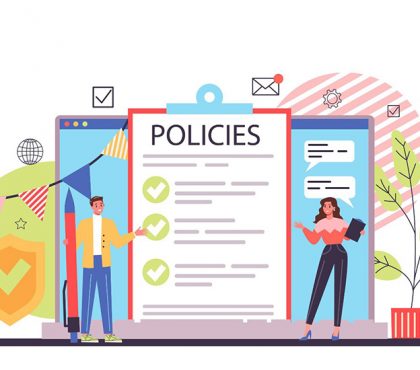Navigating compliance regulations can be overwhelming, but a well-structured compliance training program makes it manageable. In 2024, businesses must go beyond ticking boxes – creating a training program that’s both comprehensive and engaging is key. This step-by-step guide will show you how to design a program that not only keeps your organization compliant but also empowers your team to embrace ethical standards.
What is Compliance Training?
Compliance training is a type of education that teaches employees about the laws, regulations, and company policies they need to follow in their workplace. Its goal is to ensure everyone understands and follows these rules to avoid legal issues and maintain a safe, ethical environment.
Topics often include things like workplace safety, data protection, and anti-harassment policies. By completing compliance training, employees learn how to act responsibly and stay aligned with both legal standards and company expectations.
How to Develop a Compliance Training Program in 5 Simple Steps
- Analyze the compliance training needs
- Gather resources for training content
- Map the point of impacts
- Create a winning compliance training program
- Gather insight to evaluate the training effectiveness
Step 1: Analyze the Compliance Training Needs
We all know that some compliance topics like OSHA require compulsory recurrent training. Whereas other compliance training plan takes place to fulfill certain needs at a certain period. The role of your L&D team is not just to receive the requests and then build the program right away. What you have to do before starting the project is to clarify those needs in detail and analyze them.
Have a deep conversation with the department to inquire about the required compliance training topics. To give you an idea, ask about how many employees have little knowledge of related laws? Or what are the situations in the workplace that corporate compliance training plan is demanding?

The information can help you to identify future learners and the scope of knowledge that should cover. It also provides insight on exactly what specific information to deliver and how to develop a compliance training program.
In other words, you will know which problem you’re dealing with to find the best solutions. For instance, if few employees require the training, considering some supportive solutions can be a better alternative.
Preparation Checklist to Power your Digital Transformation
Wondering if you miss anything in your preparation to digitize your training? This is just what you need.
Step 2: Gather Resources for Corporate Compliance Training Materials
Many of our clients think regulation or law documents themselves are all the resources they need for compliance training programs. Well, they are just the core information. There are many more precious materials you will want to collect about the topic. They can include:
- Informational brochures, videos, and how-to manuals provide some best ways to present your training content
- Graphic assets, such as photos, diagrams, charts, which you can use to deliver the information more visually
- Case studies, which show real stories or practices
- Inspector’s manuals allow you to know what regulatory inspectors are usually looking for
And fortunately, almost all these useful materials are free. You can easily search for them on all relevant websites.
Another helpful source for you is internal or external subject matter experts (SMEs). Besides providing precise information, they will also advise you on which requirements are important in your business operation.
Step 3: Map the Point of Impact
Now you have lots of information related to the compliance training topic. But do not include all in your training program, as it unnecessarily makes the training too big. Instead, focus and pick up the pieces of content that have business impacts, for example:
- Sectors of legal or business risks
- Practices that can lead to legal action
- Situations with all-important implications
- Concerns of warranties, product quality, and return rates
So how can you find out these areas to complete the list? They can come from your research or the conversation with SMEs about compliance training topics. There can be lots of impact items. Thus, you can map as many points of impact as possible and then arrange them following the requirements.
At the end of this step, you can decide what training content to deliver that meets employees’ specific needs. In this way, your training program becomes more engaging as employees see the training knowledge applicable to your daily work.

For more ways to keep compliance training engaging and appealing, read the below article:
Step 4: Create a Winning Compliance Training Program
Are you likely to list down all the chosen information from start to end in your training program? That’s a way to go, but your training will become tiresome and unappealing at all.
Before you script a detailed training program, it’s necessary to determine and design its big structure. You need to find out how to develop a compliance training program in a suitable flow that supports the learning experience. To answer your question, we suggest using the “pull” approach.
Following this, you will divide the training material into smaller, more focused parts. Each part, or session, might link to the point of impact area defined in the previous step. In turn, each session will cover the relevant supporting content, such as regulatory definitions, legal citations, procedures, or how-to guides.

The “Pull” approach allows employees to easily find the needed information without being overwhelmed with all the provided content.
Additionally, the approach allows you to provide more specific details for each compliance aspect to increase the training effectiveness. Each session can include:
- Examples of causes to highlight the situations when compliance should be applied;
- Examples of impact to show the outcomes when you apply or do not apply the compliance
- Emotions or feelings when you make compliance-related decisions.
With this full set of content, you can demonstrate every particular part of compliance with relevant stories and scenarios. It helps you build the compliance training program more softly and engagingly.

Recommended reading
- 4 Critical Compliance Training Requirements You Have To Address
- Develop an Effective Compliance Training Strategy with 4 steps
Step 5: Gather Insight to Evaluate the Compliance Training Program Effectiveness
Do your employees receive enough compliance training for their jobs? Is the training effective? If you can’t answer these questions, you might forget this critical step to track the results and effectiveness of training programs.
Here are some indicators that you could track before and after the training:
- The number of reported non-compliance issues
- The amount of paid penalties and fines
- Employees’ awareness of compliance requirements
- Self-reports of compliance commitment from employees

A full evaluation is necessary, but it also comes with a high cost. In case your organization has a limited budget, there is still a tricky way to gather that important data informally.
- SME or supervisors follow-up: ask them about how they access changes in employees’ approach to compliance subjects
- Surveys: conduct an end-of-course or follow-up survey to get feedback on the program from your employees
- Individual or group interview: ask employees open questions to learn how they think about the compliance training and its effectiveness in their work.
All the insights you gain in this evaluation step can help to improve your program and ensure the next one is much better!

To Sum Up
Implementing an effective compliance training program in 2024 requires thoughtful planning, relevant content, and consistent evaluation. By following this 5-step guide, you can build a program that safeguards your organization, ensures regulatory compliance, and fosters a proactive compliance culture. If you’re interested in compliance training solutions to convey messages effectively and boost training results, contact us now.
- LinkedIn: https://www.linkedin.com/company/f-learning-studio/
- WhatsApp: (+84) 378 713 132
- Email: [email protected]
- Fanpage: https://www.facebook.com/f.learningstudio
Read more

Sean Bui, the founder and creative director of F.Learning Studio, is a respected leader in the e-learning and multimedia production industry. With over 10 years of experience, he has dedicated his career to helping organizations create engaging and impactful learning experiences.
Under his leadership, F.Learning Studio has grown into a trusted partner for organizations in the education, healthcare, and corporate training sectors, producing over 2,000 minutes of educational animation.







